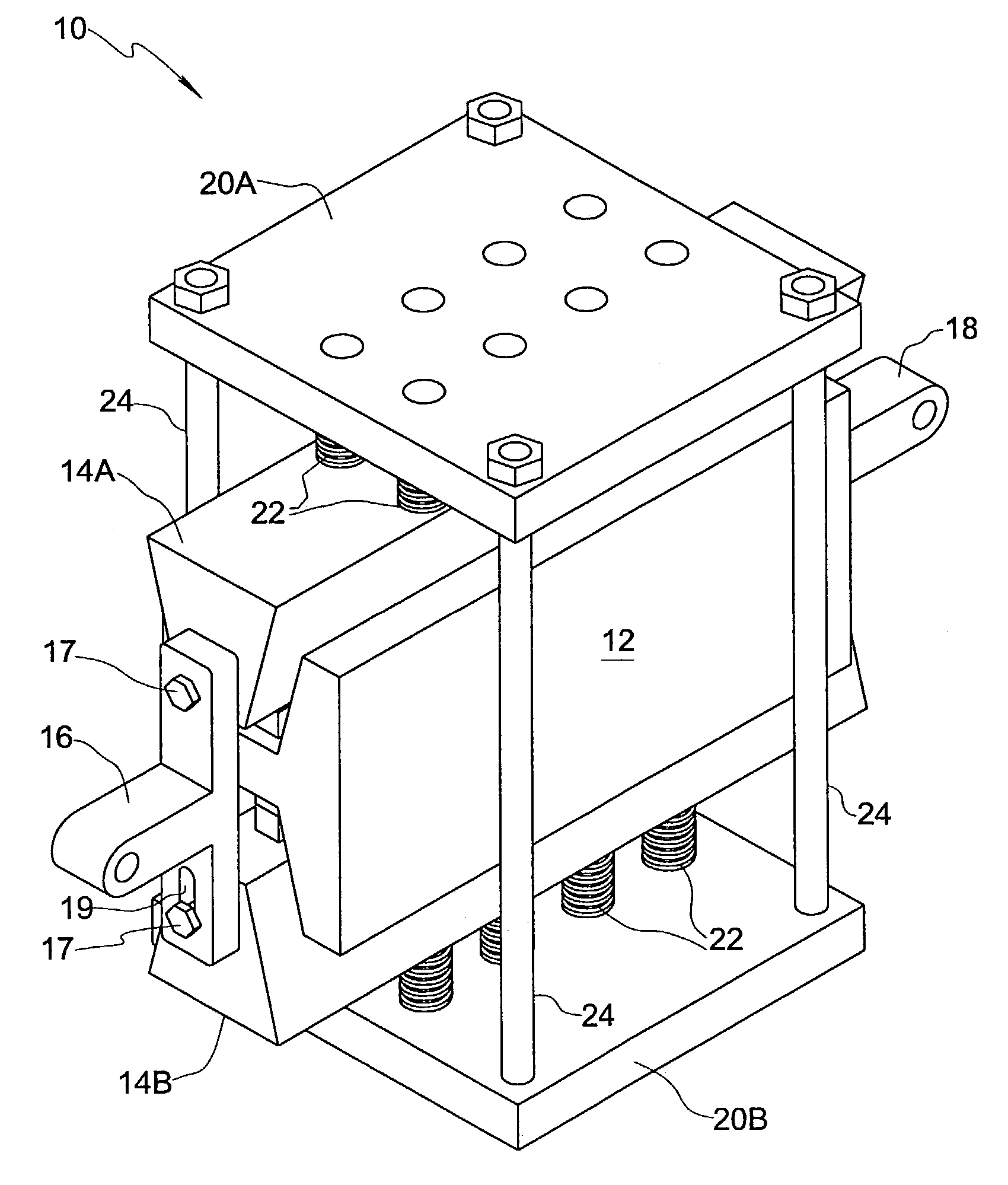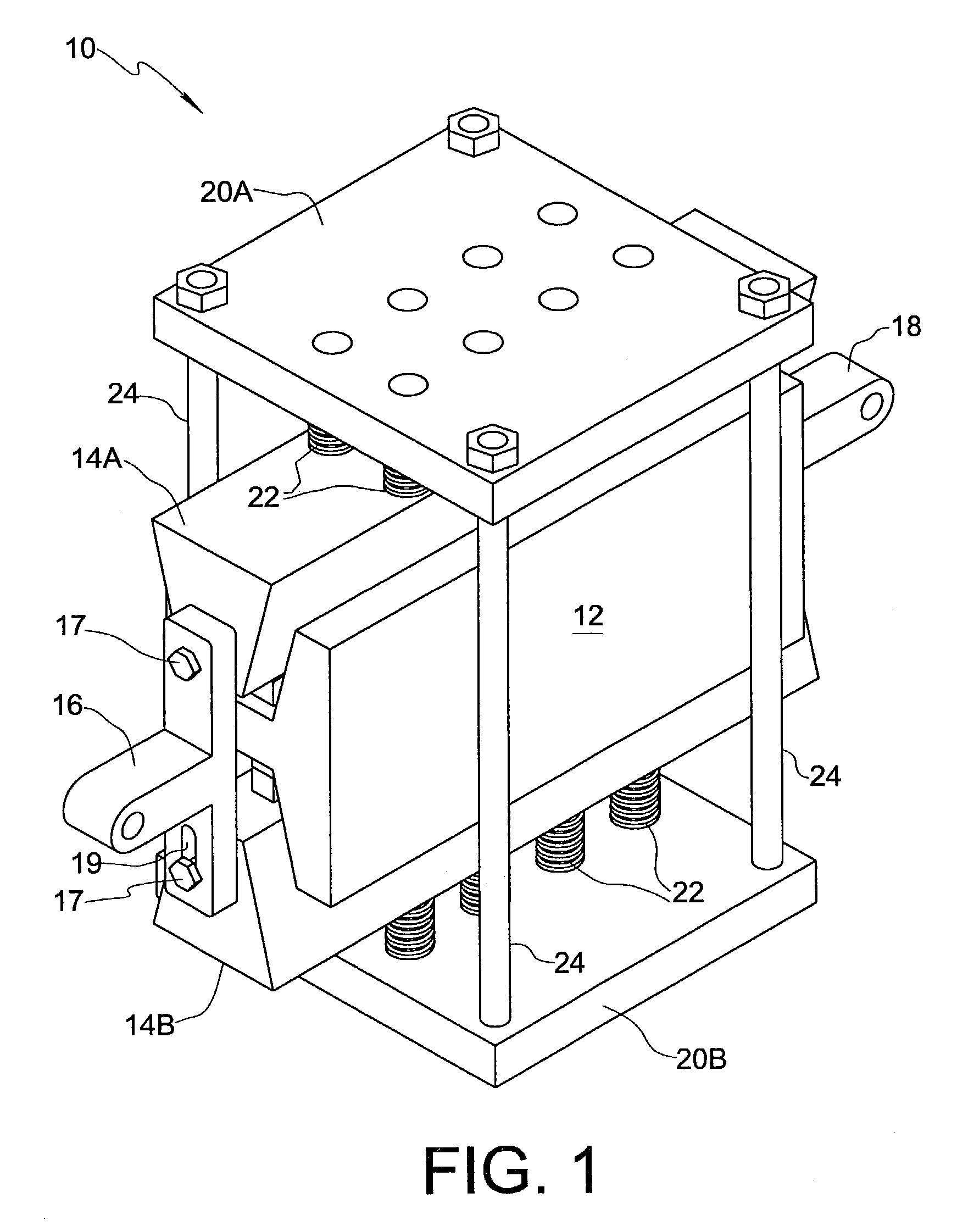Friction damper
a friction damper and damper technology, applied in the direction of shock absorbers, mechanical devices, transportation and packaging, etc., can solve the problems of insufficient control or amelioration of seismic forces of devices of any reasonable size, system not providing enough frictional force to effectively dampen seismically induced vibrations in structures, and designed to operate in one axial direction, so as to achieve control or amelioration of seismic energy
- Summary
- Abstract
- Description
- Claims
- Application Information
AI Technical Summary
Benefits of technology
Problems solved by technology
Method used
Image
Examples
Embodiment Construction
[0041]Referring initially to FIGS. 1 through 6 of the drawings, a friction damper 10 embodying the present invention in a basic form generally comprises a channel member 12 including a pair of friction channels 13A, 13B, and a pair of wedge members 14A, 14B themselves defining friction wedges respectively received by channels 13A, 13B. Channels 13A, 13B each include a pair of internal sidewalls 26 connected by an internal transverse wall 27. In the embodiment shown, both of the internal sidewalls 26 form an obtuse angle with transverse wall 27. Wedge members 14A, 14B each include a pair of external sidewalls 28 movable into respective surface-to-surface engagement with internal sidewalls 26 of the corresponding channel by adjusting depth of receipt of the wedge member in the friction channel. Channel member 12 and wedge members 14A, 14B are preferably formed of steel. The surfaces of internal sidewalls 26 and external sidewalls 28 act as the friction surfaces of friction bearing 10,...
PUM
 Login to View More
Login to View More Abstract
Description
Claims
Application Information
 Login to View More
Login to View More - R&D
- Intellectual Property
- Life Sciences
- Materials
- Tech Scout
- Unparalleled Data Quality
- Higher Quality Content
- 60% Fewer Hallucinations
Browse by: Latest US Patents, China's latest patents, Technical Efficacy Thesaurus, Application Domain, Technology Topic, Popular Technical Reports.
© 2025 PatSnap. All rights reserved.Legal|Privacy policy|Modern Slavery Act Transparency Statement|Sitemap|About US| Contact US: help@patsnap.com



